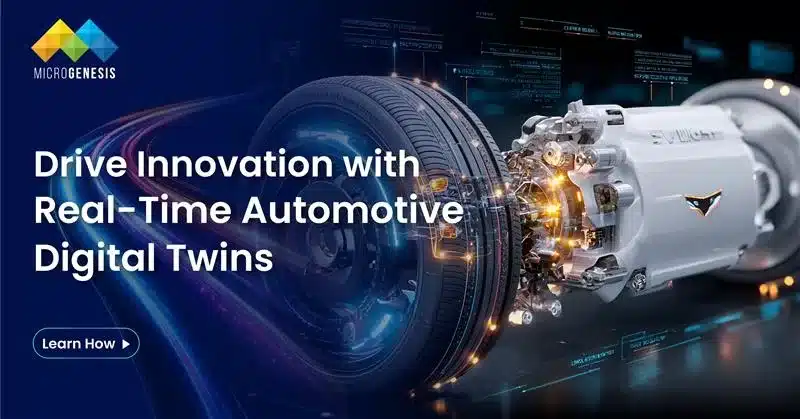The automotive industry is rapidly evolving, with modern vehicles becoming more complex and interconnected due to advancements in technology, automation, and regulations. Model-Based Systems Engineering (MBSE) has emerged as a critical approach to manage this complexity and drive innovation in automotive engineering. MBSE helps automotive manufacturers design, develop, and validate intricate systems more efficiently while ensuring compliance with industry standards.
This blog explores how MBSE is transforming automotive engineering, its applications, key benefits, and the tools and platforms used by industry leaders.
The Role of MBSE in Automotive Engineering
MBSE integrates various aspects of systems engineering—such as requirements, design, verification, and validation—into a cohesive model. In the automotive sector, this approach provides a systematic framework to address challenges posed by advanced driver assistance systems (ADAS), electric vehicles (EVs), software-defined vehicles (SDVs), and the Internet of Vehicles (IoV).
1. Complex System Design and Integration
Automotive engineering involves designing highly sophisticated systems, including mechanical, electrical, and software components. MBSE facilitates seamless collaboration between these domains by providing a unified model that integrates the entire vehicle system architecture. This enables teams to visualize interdependencies, identify risks, and mitigate potential issues early in the development lifecycle.
In an era of electrification and automation, vehicles contain thousands of interconnected components that need to function in harmony. MBSE simplifies this complexity by allowing engineers to model interactions between different systems, such as battery management systems (BMS), power electronics, sensors, and control systems.
2. Managing Software Complexity in SDVs
With the rise of software-defined vehicles (SDVs), the automotive industry is increasingly reliant on complex software systems. MBSE is critical for managing software complexity by enabling model-based design and simulation. Engineers can define software behavior, test it virtually, and trace system requirements from high-level designs to specific software modules.
MBSE supports the integration of real-time software, embedded control systems, and communication networks in vehicles. This ensures that various automotive features like ADAS, infotainment systems, and autonomous driving technologies are synchronized, reliable, and meet safety standards.
3. Enhancing Safety and Compliance
Safety is paramount in automotive engineering, especially with autonomous vehicles on the horizon. MBSE helps manufacturers ensure compliance with industry safety standards such as ISO 26262 (functional safety) and AUTOSAR (Automotive Open System Architecture).
MBSE models allow for early detection of safety-critical issues, enabling engineers to simulate and validate system behavior under different conditions. This reduces the risk of failures and ensures that systems are robust and safe before entering production.
Moreover, MBSE streamlines regulatory compliance by providing a transparent and traceable link between system requirements, design, and verification. Regulatory bodies can easily review models to ensure they meet necessary safety and performance criteria.
Applications of MBSE in Automotive Engineering
MBSE is widely applied across various stages of automotive development, from conceptual design to validation and maintenance. Some key applications include:
1. Electric Vehicle Development
As automakers transition to electric vehicles, MBSE is essential for optimizing battery systems, energy management, and powertrain design. MBSE models can simulate the impact of different configurations on vehicle performance, enabling engineers to make data-driven decisions to improve energy efficiency and range.
2. Autonomous Driving Systems
MBSE plays a critical role in the development of autonomous driving systems by modeling the interaction between sensors, control algorithms, and the vehicle’s physical environment. Engineers can simulate complex driving scenarios, test autonomous behavior, and ensure that vehicles can safely navigate various conditions.
3. ADAS (Advanced Driver Assistance Systems)
The integration of advanced driver assistance systems requires close coordination between hardware (e.g., cameras, radars, LIDARs) and software algorithms. MBSE enables engineers to model and test ADAS features such as adaptive cruise control, lane-keeping assistance, and collision avoidance in a virtual environment before deploying them in real vehicles.
4. Vehicle Architecture Design
Automotive manufacturers are using MBSE to define and optimize vehicle architectures, including electrical and electronic systems, mechanical subsystems, and software components. MBSE provides a clear visual representation of vehicle architecture, helping teams make better design choices while maintaining cost and weight constraints.
5. Vehicle-to-Everything (V2X) Communication
As connected vehicles become a reality, MBSE is crucial for designing systems that communicate with external infrastructure and other vehicles (V2X communication). MBSE helps manage the complexity of vehicle communication networks and ensures that data exchange is secure, efficient, and reliable.
Also read: Introduction to Systems Modeling Language (SysML)
Key Benefits of MBSE in Automotive Engineering
1. Early Detection of Errors
By integrating design and simulation into a unified model, MBSE enables the early identification of design flaws, functional mismatches, and system-level errors. This reduces costly changes later in the development process and accelerates time-to-market.
2. Improved Collaboration and Efficiency
MBSE enhances collaboration across multiple engineering disciplines—mechanical, electrical, and software—by creating a common framework for system design. This reduces communication gaps, ensures all teams are working toward the same goals, and leads to more efficient development cycles.
3. Enhanced Traceability and Documentation
Traceability is a key benefit of MBSE, particularly in the automotive sector, where regulatory compliance is critical. MBSE ensures that every design element can be traced back to system requirements, enabling easier validation and certification of complex automotive systems.
4. Optimized System Performance
Through MBSE, engineers can simulate the performance of various systems and components under different conditions. This helps in optimizing vehicle performance, including fuel efficiency, handling, safety, and user experience.
5. Reduced Development Costs and Time
By identifying potential issues early in the development cycle and allowing virtual testing, MBSE reduces the number of physical prototypes required. This leads to faster design iterations and lower development costs.
MBSE Tools in Automotive Engineering
To implement MBSE effectively, automotive manufacturers rely on a suite of specialized tools that support system modeling, simulation, and validation. Some of the most popular MBSE tools used in the automotive industry include:
1. PTC Windchill and Codebeamer
PTC Windchill and Codebeamer offer comprehensive product lifecycle management (PLM) and application lifecycle management (ALM) solutions. Codebeamer, in particular, is tailored to automotive engineering, providing robust support for compliance, traceability, and collaboration across the entire vehicle development lifecycle.
2. IBM Rational Rhapsody
IBM Rational Rhapsody is a leading MBSE tool for automotive engineering, offering support for real-time and embedded systems design. It is particularly suited for software development in complex automotive systems, including autonomous vehicles and ADAS.
3. Cameo Systems Modeler
Cameo Systems Modeler is widely used in automotive engineering for system architecture modeling. It supports MBSE standards like SysML and UML and integrates with simulation tools for performance and behavior analysis.
4. Siemens Polarion
Siemens Polarion offers comprehensive ALM and PLM capabilities with integrated support for MBSE. It is well-suited for automotive manufacturers looking to streamline complex system development and ensure compliance with safety regulations.
5. Enterprise Architect
Enterprise Architect provides a cost-effective solution for MBSE, offering support for SysML and UML. It is used by automotive companies for system architecture modeling, requirements management, and project documentation.
Conclusion: MBSE as a Key Driver of Automotive Innovation
Model-Based Systems Engineering has become a fundamental approach for automotive manufacturers aiming to stay competitive in a rapidly evolving industry. With the increasing complexity of modern vehicles, MBSE offers a structured, efficient way to manage design, development, and compliance challenges.
MicroGenesis is a Partner with PTC, offering licensing, consulting, and training services for both Codebeamer ALM and Windchill PLM. These tools provide robust solutions for managing complexity, ensuring compliance, and optimizing performance in automotive engineering.
Additionally, MicroGenesis has been a trusted partner with IBM for over 16 years, specializing in the successful implementation of IBM ELM tools. We provide licensing, consulting, and training services to help our clients fully leverage these powerful MBSE tools. With deep expertise in both PTC Codebeamer and IBM ecosystems, MicroGenesis is your ideal partner for a seamless and successful MBSE implementation in automotive engineering. As one of the top managed service providers, MicroGenesis ensures that organizations receive end-to-end support for all their digital transformation needs, from systems engineering to lifecycle management, driving operational excellence and innovation.




